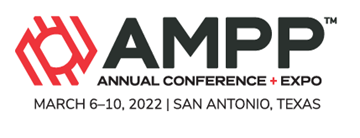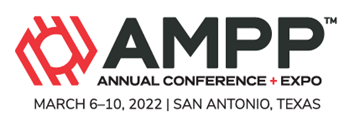Search
Coatings and Linings
View as
Sort by
Display
per page
Robotic Sprayed-in-Place Pipelining: the Polyurea Goes Round & Round
Product Number:
41214-847-SG
Publication Date:
2014
$20.00
Robust Non-Phosphorus Cooling Water Treatment Program That Reduces The Biological Control Challenge - A Case Study
Product Number:
51322-17626-SG
Publication Date:
2022
$20.00
Role Of Acetic Acid On The Kinetics And Mechanism Of Carbon Steel Dissolution Under CO2 Top Of Line Corrosion
Product Number:
51322-17818-SG
Publication Date:
2022
$20.00
RP-01-69-1972 "Control of External Corrosion on Underground or Submerged Metallic Piping Systems"
Product Number:
21001-1972
Publication Date:
1972
$179.00
RP0169-2002-SG (Chinese), Control of External Corrosion on Underground or Submerged Metallic Piping Systems
Product Number:
RP0169-1972
ISBN:
1-57590-035-1
Publication Date:
1972
$179.00
RP-01-72-HD1972-SG, Surface Preparation of Steel and Other Hard Materials by Water Blasting Prior to Coating or Recoating
Product Number:
RP-01-72-HD1972
Publication Date:
1972
$179.00
RP0178-HD1995-SG Fabrication Details, Surface Finish Requirements, and Proper Design Considerations for Tanks and Vessels to Be Lined for Immersion Service-HD19995
Product Number:
21022-HD1995
Publication Date:
1995
$179.00
RP0181-HD1994-SG Liquid-Applied Internal Protective Coatings for Oilfield Production Equipment-HD1994
Product Number:
21025-HD1994
Publication Date:
1994
$179.00
RP0185-HD1996-SG Extruded Polyolefin Resin Coating Systems with Soft Adhesives for Underground or Submerged Pipe-HD1996
Product Number:
21029-HD1996
ISBN:
1-57590-017-3
Publication Date:
1996
$179.00
RP0188-HD1990-SG Discontinuity (Holiday) Testing of Protective Coatings-HD1990
Product Number:
21038-HD1990
Publication Date:
1990
$179.00
RP0188-HD1999-SG Discontinuity (Holiday) Testing of New Protective Coatings on Conductive Substrates-HD1999
Product Number:
21038-HD1999
ISBN:
ISBN 1-57590-074-2
Publication Date:
1999
$179.00
RP0190-1990, External Protective Coatings for Joints, Fittings, and Valves on Metallic Underground or Submerged Pipelines and Piping Systems
Product Number:
53071-HD1990
Publication Date:
1990
$179.00












